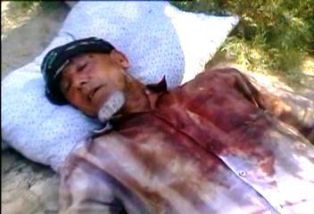
The hunger to extend and secure their rights has long been central to the experience of Iran's women. Their response to the challenges facing them continues to evolve, says Nikki R Keddie.
The subject of women in Iran since 1979 is a large one, to write about it briefly a challenge. In this article I will stress a theme that is relevant to the thirtieth anniversary of the revolution but also long predates it: the importance of the "two cultures" of 20th-century urban Iran regarding women: the popular-bazaar culture and the educated-elite culture, and the unfortunate, but not unique, association of governmental reforms affecting women with autocratic rulers seen as tools of the United States (see "Women in the Middle East: Progress and Backlash", Current History [December 2008]). Nikki R Keddie is professor emerita of history, UCLA. Her books include Modern Iran: Roots and Results of Revolution (Yale University Press, 2006) and Women in the Middle East: Past and Present (Princeton University Press, 2007) This is a slightly edited version of an essay written for the Middle East Institute's symposium on "The Iranian Revolution at 30" in Washington on 29 January 2009
As in most countries, the
The modernisation of women's rights and government activities in relation to women began under the Pahlavi shahs (r. 1925-79). This comprised the opening of education at all levels and of some professions to women; and, most dramatically under Mohammad Reza Shah, involved pressure from women's groups that resulted in votes for women and major legal reforms in the Family Protection Law (FPL) of 1967 / 1975.
The association of such measures with autocratic shahs and elites and with unquestioning imitation of the west provided fertile ground for a counter-movement in part based (as has been much conservatism in the United States) on literalist religion, which claimed that both nature and religious texts validated unequal status and rights for women. In order to express solidarity with the popular class and religious opponents of the shah, secularists and leftists joined the opposition in large numbers, and many donned chadors (see Modern Iran: Roots and Results of Revolution [Yale University Press, 2006]).
They thought Ayatollah Khomeini would not exercise real power and that more secular leaders would win out. However, once Khomeini took power in 1979 many of the recently achieved rights for women were reversed. It is too simple to say that the FPL was abrogated and the sharia restored, but the new legal situation was indeed corrosive of the rights that women had acquired not long before.
Many popular-class women had not benefited from the Pahlavi reforms and some resented the forced changes in behaviour that they involved. Before and immediately after the 1979 revolution, western feminists were prominent in attempts to protest against Khomeini's attempts at re-veiling and limiting women's legal rights; but these women did not know enough about Iran to accommodate the views of those women who did not advocate wholesale westernisation.
The currency of rights
With regard to women's status as on other matters, the deep class division in religio-political outlook in Iran remained strong. To some degree it still does, though more women have become urbanised and educated and want more freedoms. Moreover, the very efforts of the government to involve women in defence during the Iran-Iraq war (1980-88), to educate girls at all levels, and (after 1989) to promote family planning and reduce births helped awaken many girls and women to new ideas.
Women also increasingly resisted reversals in women's rights. What were formerly only elite ideas about gender and women's rights spread to the popular classes, sometimes in the form of what has been called "Islamic feminism". Several women began to offer gender-egalitarian interpretations of the Qur'an and Islamic traditions in place of the dominant conservative ones.
In broad terms, the decade before Khomeini's death in 1989 was a period of strengthening Khomeinism, while 1990-2000 was a period of pragmatism and some reform under presidents Hashemi Rafsanjani (1989-97) and Mohammad Khatami (1997-2005), with partial agreement and partial resistance from supreme leader Ayatollah Ali Khamenei.
In broad terms, the decade before Khomeini's death in 1989 was a period of strengthening Khomeinism, while 1990-2000 was a period of pragmatism and some reform under presidents Hashemi Rafsanjani (1989-97) and Mohammad Khatami (1997-2005), with partial agreement and partial resistance from supreme leader Ayatollah Ali Khamenei.
The restrictions on girls' and women's public behaviour and dress and on the media (including a renewed women's press) were gradually loosened, especially in the better-off neighbourhoods of big cities. Yet since about 2001, there has been a recrudescence of conservatism, enforced in the streets especially by popular-class men and their organisations; this increased after the election of Mahmoud Ahmadinejad to the presidency in June 2005. He represents a new generation of neo-conservatives with deep ties to the veterans of the Iran-Iraq war and the Revolutionary Guards. In response, many young elite women turned to personal and sexual means of defiance (see Nasrin Alavi, "Women in Iran: repression and resistance", 5 March 2007).
However, there also was a spread of ideas of women's rights beyond the elite, especially in the innovative campaign for a million signatures for women's legal equality which brought educated women into the homes of popular-class women to discuss their problems. The government has recently arrested several of the women prominent in this campaign; it has also, notoriously, invaded the offices of Shirin Ebadi, the Nobel-prizewinning activist for women's, children's, and human rights (see Nazila Fathi, "Shirin Ebadi and Iran's women: in the vanguard of change", October 2003).
This trend too has a longer history (see Women in the Middle East: Past and Present [Princeton University Press, 2007]). The scholars of Iranian women's history have found that even before any western impact in Iran was felt or became important, many women in the country were already politically active behind the scenes in ways outsiders failed to register. This is noted in works such as Parvin Paidar's comprehensive Women and the Political Process in Twentieth Century Iran (Cambridge University Press, 1997), and Janet Afary's Sexual Politics in Modern Iran (Cambridge University Press, 2009).
The next generations
Some elite women made the mistake of not taking advantage of Iranian traditions and thinking the west had to be imitated in everything from dress to drinking. Today, many young elite women think they are imitating the west (which they know only from the media) by turning to personal and sexual means of defiance: being sexually promiscuous, partaking in drugs and drinks favoured in the west. Politically active women doubt that these behaviours can bring positive changes for women, especially as they incur the disapproval of many women as well as provoking the government and rightwing enforcers.
The current economic crisis in Iran - founded on governmental mismanagement and the fall in oil prices, and exacerbated by international sanctions - has increased popular resistance. It seems important not to encourage extreme behaviours that do not even bring happiness to those who indulge in them, and alienate many others (see Pardis Mahdavi, Passionate Uprisings: Iran's Sexual Revolution [Stanford University Press, 2009]).
Instead, women and men of all classes who want change should unite around a candidate for the presidential elections in June 2009 who promises to reverse the crackdowns on women, young people, strikers, and reform publications that have characterised recent years; and both women and men need to promote programmes that meet the needs of Iran's people. If change is to come to Iran, economic discontent, which undermines popular support for Ahmadinejad, will be a major reason.



























































No comments:
Post a Comment